1. What Top Talent Wants: Top performers seek appreciation for their excellent work, social visibility for achievements, recognition from supervisors, and appreciation from peers, which enhances their motivation and commitment to stay.
2. Importance of Employee Recognition: Recognizing top talent is critical for retention, as it helps prevent disruptions, maintain valuable relationships, preserve knowledge, and avoid the high costs of hiring and training replacements.
3. Leveraging Recognition for Retention: A strategic focus on employee recognition fosters a sense of value and connection, reduces turnover, and contributes to sustained business growth.
4. Best Practices for Effective Recognition: Implement instant and timely recognition, offer monetary rewards, use gamification to maintain interest, promote peer-to-peer recognition, enhance social visibility, celebrate personal milestones, and use digital recognition platforms.
Attracting and retaining top talent is critical for organizations seeking sustained business growth and profitability. Hence, organizations need to leverage employee recognition as an essential aspect of their HR strategy to retain top talent.

Employee retention is the ability of an organization to minimize the chances of employees leaving the organization to seek job options elsewhere.
Losing any employee might hurt the organization’s business operations and performance.
However, losing the best-performing employees, the top talent, might have even more significant negative consequences.
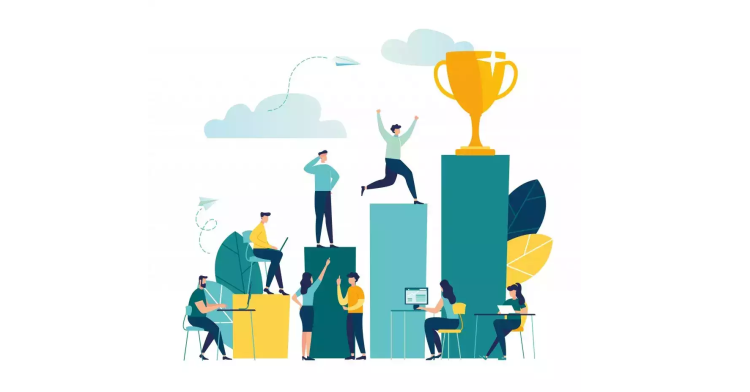
Here are a few reasons why the loss of top talent can be detrimental to the organization:
1. Disruption of business process or loss of continuity of business operations
2. Decline or loss of meaningful customer relationships
3. Loss of critical business or process knowledge
4. Loss of opportunity for innovation and business growth
5. Loss of competitive advantage, especially if top talent joins the competition
6. Fall in efficiency, productivity, and quality of work
7. Additional costs involved in hiring and training a replacement
8. Drop in the morale of other members of the workforce
Employee recognition is core to the HR strategy of any organization.
Poor employee recognition could be one of the key reasons for the poor retention of top talent in the organization.
To understand this, let’s look at what the best-performing employees want when it comes to employee recognition:
1. Appreciation For Good Work
2. Social Visibility For Achievements
3. Recognition From Supervisors
4. Appreciation From Peers
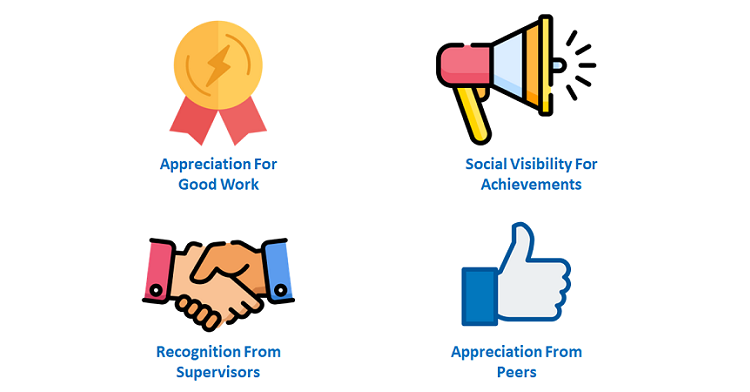

Being appreciated for their excellent work is a basic human need.
The top-performing employees in the organization put in their best efforts to achieve the desired results.
If the organization fails to acknowledge and recognize their efforts and contributions, it results in a loss of motivation for them.
This lack of action impacts their self-confidence and makes them feel unwanted in the organization.
Consequently, they may start looking for other employment options where they might have a more important role and be better appreciated.

All employees, especially top talent, highly value social recognition of their work and achievements.
However, when the organization fails to recognize and celebrate their achievements, there is a feeling of loss of self-worth.
They may interpret this as a sign that their skills and dedication are of little value to the organization.
Lack of recognition might prompt them to seek other job opportunities where their recognition needs are better met.
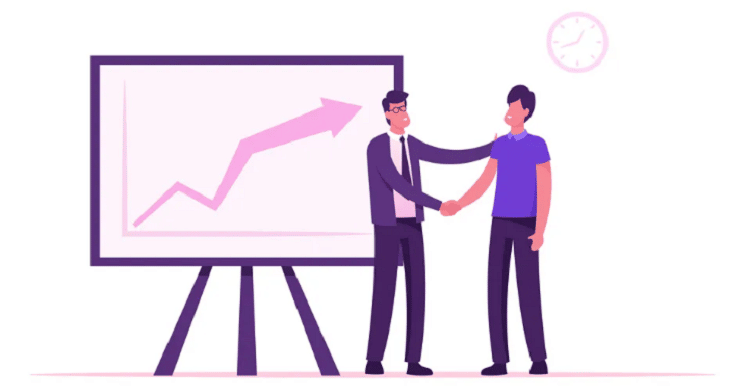
Employees need recognition from their supervisors and managers for their achievements.
It’s especially true for the top talent who may repeatedly exceed expectations and overachieve on their goals.
Recognition from their supervisors can increase their self-worth and job satisfaction, and create better working relationships with the supervisors.
It can lead to their staying in the organization for longer.

Similarly, appreciation and acknowledgment from their co-workers can increase their sense of value to their team and the organization.
It also helps create a conducive work environment, encouraging top talent to stay longer.

Organizations often focus only on levers such as higher compensation to prevent their best employees from leaving.
However, they often overlook employee recognition as one of the simplest yet key strategies for enhancing employee retention.
Here are a few best practices that organizations can follow for leveraging employee recognition to boost employee retention:
1. Ensure Instant And Timely Recognition
2. Offer Rewards With Monetary Benefits
3. Use Gamification To Generate Interest
4. Promote Peer-to-Peer Recognition
5. Enable Social Visibility of Recognition
6. Celebrate Personal Milestones
7. Utilize A Digital Recognition Platform
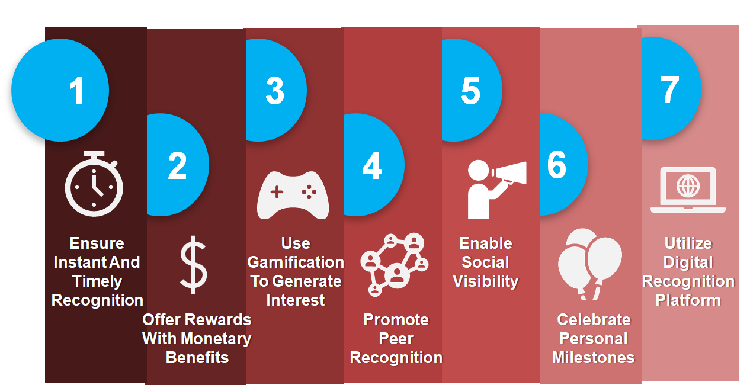

Offering instant and timely recognition in the form of spot awards can be one of the best ways to assure top employees that they are valued and appreciated by their supervisors and the organization.
Timely recognition makes it more meaningful and motivates employees to maintain their good performance.
Spot recognition can prove highly effective in boosting employee morale and the sense of belonging to the organization.

Monetary rewards are very effective for employee recognition.
Giving that extra financial benefit can be the best way to keep the best-performing employees happy and committed.
Monetary benefits can enhance the value of recognition in the eyes of the employees making them more impactful.
Organizations should consider offering financial benefits, such as cash or gift cards, as part of spot awards, employee-of-the-month awards, quarterly and annual awards, etc.
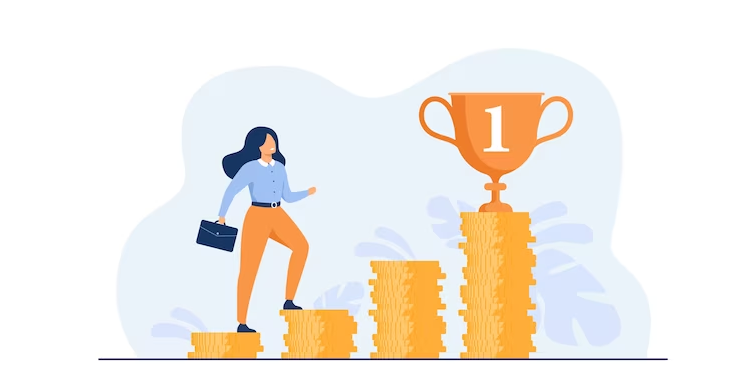
Even the best recognition programs can become monotonous and dull over time, leading employees to lose interest.
An effective way to overcome this problem is by introducing gamification elements and techniques to make the programs much more exciting.
Implementing reward points, leaderboards, badges, walls of fame, contests, and challenges can help employees remain interested in recognition programs.
Gamification can help engage top talent, who are likely to make the most of the program, as they typically earn the highest reward points.

Peer-to-peer recognition empowers employees to appreciate their co-workers’ excellent work and sincere efforts, thereby building a healthy work environment.
Receiving a shoutout or a note of appreciation from their co-workers can boost the motivation of top employees in a big way.
Even the best employees feel motivated by the appreciation and support of their peers.
It strengthens their bond with the team and helps create a better work environment.

Social visibility of their excellent work and achievements creates a sense of pride and positivity among the best-performing employees.
Such social recognition helps them feel that the organization values their contribution towards its growth and success.
Social visibility of employee recognition can be achieved through award ceremonies as part of team meetings or town halls, and the involvement of the top management.
Publishing the recognition on organization-wide platforms such as MS Teams, Slack, the Intranet, or company social media handles can help create the required visibility within and outside the organization.

Celebrating the personal milestones of employees can send out a positive message to them about being valued by the organization as individuals.
When organizations acknowledge and celebrate the special moments and occasions in their employees’ lives, they earn their trust and loyalty.
Employees’ birthdays, work anniversaries, weddings, parenthood, and other personal milestones are celebrated to make them feel like an integral part of the organizational family and strengthen their commitment.

Investing in employee recognition software can help make the recognition process much easier and more impactful.
It can enable organizations to initiate recognition, start conversations, boost engagement and coordination, and strengthen employee social bonding.
Organizations should look to take advantage of the various features and functionalities offered by these platforms to reward and recognize their top employees effectively.
Such platforms can enable smooth and timely recognition, gamification of work, monetary benefits such as gift cards, and publishing recognition updates on other platforms.
The top talent might most appreciate these and will likely be the biggest recipients.
The success and growth of any organization heavily rely on its top talent. When employees feel valued and connected to their colleagues and company, they are less likely to quit. Therefore, organizations should focus on utilizing employee recognition as an effective HR strategy to retain their top talent.

Lead author: Sagar Chaudhuri, the Co-Founder and CEO of HiFives. He is an HR Tech Evangelist with over 25 years of corporate and entrepreneurship experience. In the past, SagaHaheldin held leadership roles at companies such as Genpact, Infosys, and ICICI Bank. He has an engineering degree from IIT Kharagpur and an MBA from IIM Lucknow. Connect on LinkedIn
To stay updated on the latest HiFives blogs, follow us on Twitter (@MyHiFives)